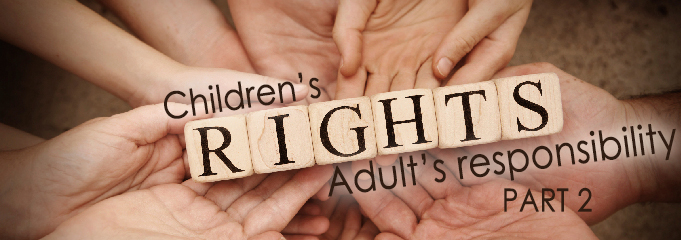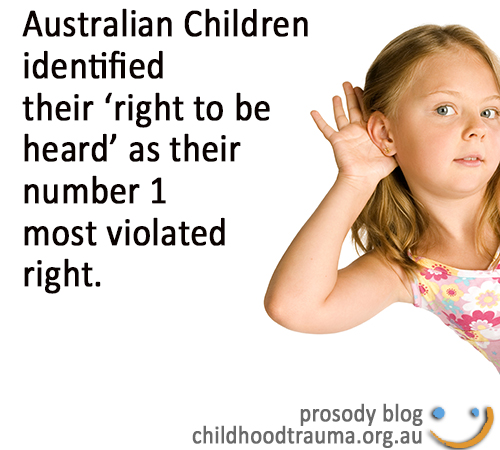
Children’s rights, Adult’s Responsibility – Part 2

This article was authored by Pat Jewell, Team Leader,
Parenting Education and Support Program, at the Australian Childhood Foundation.
In the first blog in this series it was recognised that for children to access their rights, accorded to them under the 1989 United Nations Convention on the Rights of the Child, they would need to rely on the adults responsible for them. Adults in the western world are managing the provision and protection rights but it is the participation rights that have created misunderstanding and controversy and the most debate within the academic literature.
The 6 “participation” rights (articles 12- 17) are listed here in abbreviated form:
- The right to be heard (article 12),
- The right to freedom of expression (article 13),
- The right to freedom of thought, conscience, and religion (article 14),
- The right to freedom of association and assembly (article 15),
- The right to privacy (article 16),
- The right to have access to appropriate information and mass media (article 17)
To read the full descriptions of each of these 6 participant rights go to http://www.ohchr.org/en/professionalinterest/pages/crc.aspx.
It is article 12 of the 6 participation rights, which has been blamed for the USA not signing the 1989 UNCRC . As Landown states: “Participation rights were a new concept in international law, and posed a challenge to most countries throughout the world where a culture of listening to children was not widespread or even acceptable” (2011:3). Article 12 is challenging paternalistic views of children and is asking for something quite different to protection of children and providing for children. It is asking adults to be able to balance between looking out for and looking after children, one view of children and allowing children their right to views and opinions, quite another view of children.
These two different descriptions of Article 12 illuminate the controversy:
- “one of the most widely violated and disregarded in almost every sphere of children’s lives” (Shier, 2001 p. 108).
- “heart of the convention”(Archard, D., Skivenes., M 2009)
In 2013 The Australian National Commissioner for Children tabled her first report to the United Nations on the state of Australia’s children in relation to accessing the 1989 UNCRC rights. In the previous year the National Commissioner for Children listened to children in her Big Banter project that was conducted across Australia.
 Australian children identified 5 rights that they did not have access to and their right to be heard (Article 12) they identified as their number 1 most violated right.
Australian children identified 5 rights that they did not have access to and their right to be heard (Article 12) they identified as their number 1 most violated right.
The commissioner identified possible barriers such as opportunities for children to be listened to and heard and mechanisms for this to occur.
Adults have felt threatened by Article 12 as it is seen to undermine adult’s authority. The convention states clearly that Article 12 is to be read with Article 5 which states the role of the adult in relation to Article 12. The children shall have a voice and be heard but the adults will make the final decision “in the best interests of the child”.
Interestingly Australian children spoke of Article 12 as giving them the right to “have their say, “be listened to, “have an adult listen to them” and they also said “we don’t want to make decisions – we just want a say.”
Have you read the first Children’s Rights report? The link is here.
What do the “participation” rights challenge in you, especially Article 12?
REFERENCES
Archard, D., Skivenes., M. (2009). “Balancing a Child’s Best Interest and a Child’s View.” International Journal of Children’s Rights 17: 1-21.
Lansdown, G. (2011). Every Child’s Right to be Heard. A Resource Guide on The UN Committee on the Rights of the Child General Comment No 12. Save The Children United Kingdom.
Shier, H. (2001). “Pathways to participation: Openings, Opportunities and Obligations.” Children and Society 15: 107-117.
